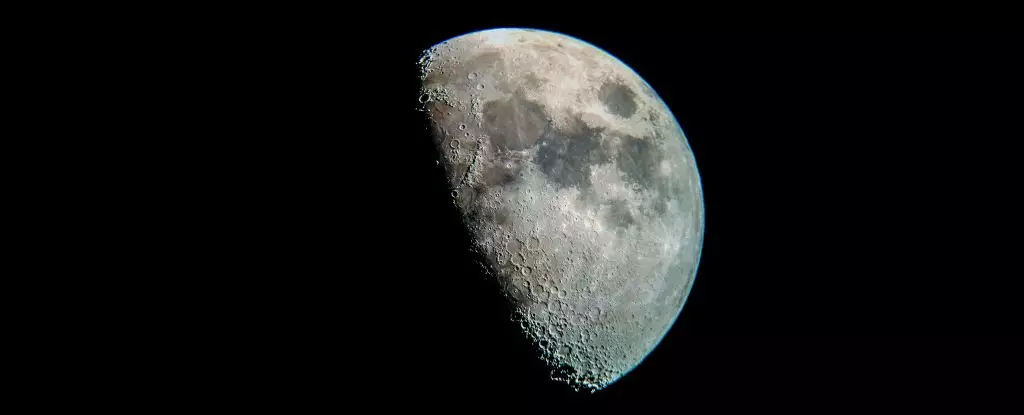For centuries, human imagination has painted the Moon as a beacon of wonder, giving rise to whimsical tales such as the myth that it is made of green cheese. However, recent research, culminating in findings published in May 2023, has effectively countered one of the long-standing mysteries surrounding our natural satellite: the composition of the Moon’s inner core. Led by Arthur Briaud and his research team from the French National Centre for Scientific Research, the study reveals that the Moon houses a solid inner core, akin in density to iron. This revelation heralds significant implications not only for lunar studies but also for our broader understanding of the Solar System’s enigmatic history.
Understanding the Lunar Core through Seismic Studies
To unravel the complexities of celestial bodies, scientists often turn to seismic data. Such data reveals how acoustic waves—emitted during seismic events—propagate and reflect through different materials within the lunar structure. While the Apollo missions provided a wealth of seismic information, the resolution remained too low to definitively characterize the Moon’s core. Scientists had confirmed a fluid outer core’s existence, but the state of the inner core was far less certain, with debates oscillating between solid and molten models.
To draw clearer conclusions, Briaud’s team embarked on an elaborate investigation, combining data from various lunar missions and laser-ranging experiments. They thoroughly analyzed characteristics such as the Moon’s gravitational interactions with Earth, its distance variations, and its overall density. This comprehensive dataset allowed the team to develop models assigning different types of cores to the Moon, ultimately seeking the one that aligned most closely with the observed data.
The research yielded several notable discoveries. A primary outcome indicated that the most accurate models suggest an active overturn process occurring within the lunar mantle. This refers to a dynamic interchange where denser materials sink toward the core while lighter materials rise. This phenomenon offers compelling insights into the composition of volcanic regions on the Moon, enriching our understanding of its geological history.
Moreover, Briaud and his colleagues posited that the Moon’s core exhibits a structure remarkably similar to that of Earth—characterized by a fluid outer layer and a solid inner core. Their analysis uncovered an outer core radius of approximately 362 kilometers (about 225 miles) and a solid inner core with a radius of about 258 kilometers (around 160 miles), representing roughly 15% of the Moon’s total radius. The solid inner core’s density, approximately 7,822 kilograms per cubic meter, closely mirrors that of iron, suggesting a profound connection between the Moon and Earth.
Interestingly, earlier studies provided hints that align closely with Briaud’s findings. In 2011, NASA scientist Renee Weber’s team suggested the presence of a solid inner core of roughly 240 kilometers in radius and a density hovering near 8,000 kilograms per cubic meter. Notably, Briaud’s work corroborates and strengthens these earlier findings, forging a robust narrative of a lunar core that resembles Earth’s. Such confirmations not only bolster scientific confidence but also amplify interest in the implications concerning the Moon’s evolutionary journey.
Understanding the Moon’s inner core resonates deeply with the historical context of its magnetic field. Following its formation, the Moon initially possessed a powerful magnetic field, which waned approximately 3.2 billion years ago. The nature of the lunar core is pivotal in deciphering the mechanics behind this decline, as magnetic fields are intrinsically linked to the motions and convection within a planetary core. Consequently, insights into the core’s structural attributes can help elucidate the mysterious factors that led to the lunar magnetic field’s disappearance.
The Future of Lunar Exploration
As humanity gears up for renewed exploration of the Moon, including potential manned missions, the promise of utilizing seismic verification techniques could soon provide further validation of these groundbreaking findings. The ongoing quest for knowledge about our celestial neighbor serves not only to satisfy human curiosity but also has probable implications for understanding the Solar System’s formation and evolution.
The revelation of the Moon’s solid inner core reshapes our understanding of its geological history and opens new avenues for research. As we delve deeper into the mysteries of our planetary companions, discoveries such as these exemplify the blend of ancient myth and modern science, bridging the gap between what we observe and what we aspire to comprehend. Indeed, the Moon continues to be a source of intrigue and wonder—no longer a whimsical cheese, but a complex world with stories yet to be told.


Leave a Reply